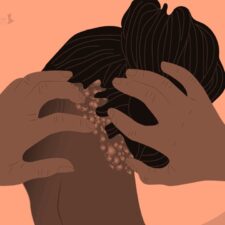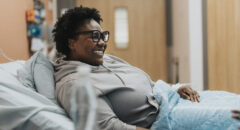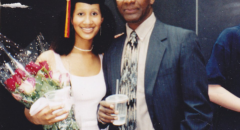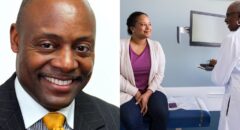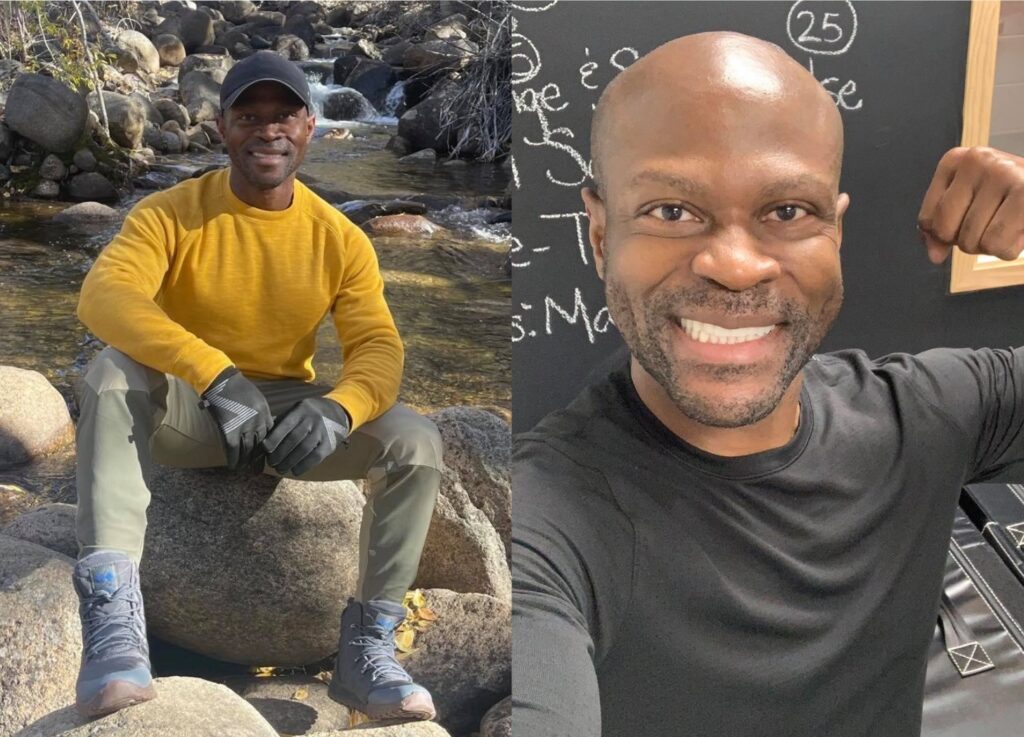
Black Americans have historically been misrepresented in the medical industry, often subjected to unequal treatment and exclusion from medical advancements. This disparity is why it’s important for medical professionals, researchers, policymakers and advocates like Tony Newberne are important because these conversations are what ensure that all communities receive fair and accurate care.
In our conversation with Tony Newberne, he got candid about his multiple myeloma diagnosis, his journey with receiving care, and what he hopes to see in the future for the healthcare system.
Tony Newberne is a 10+ year survivor of high-risk myeloma and is on continuous treatment regimens. He is a certified personal trainer, dietary manager, and patient advocate for several leading national nonprofit organizations, including the PAN Foundation. In his limited spare time, Tony enjoys spending quality time with his partner and pet Doberman, working in his vegetable garden, and watching a good Netflix series.
Here’s what Tony, a patient advocate for the PAN Foundation and multiple myeloma survivor shared about his journey:
BDO: Tony, I’d like to start from the beginning when you found out about your diagnosis. Could you share how you first learned that you had high-risk multiple myeloma?
Tony Newberne: I was diagnosed with multiple myeloma on September 18, 2013, and I learned about it by accident. It all started back in 2005 when I woke up early in the morning to get ready for work. While brushing my teeth, I noticed blood spots on the top of my tongue. I went to the emergency room, where they took labs and informed me that my platelet count was 20,000. They admitted me to the hospital, where I stayed for a week undergoing multiple tests. I was diagnosed with RTP (Reactive Thrombocytopenia).
Afterward, I had a follow-up visit with an oncologist, who monitored me for 3-4 months. My platelet count eventually rose, and the oncologist discharged me with no further follow-up. I went on with my life, thinking everything was okay.
Then, in August 2013, while training one of my clients, I tripped and fell. After the fall, I felt something tweak in my back, but I wasn’t sure what it was. An hour later, the pain intensified, and I went to the ER. They didn’t take labs but did some imaging, diagnosing it as a muscle injury from working out. There were no incidental findings, so they sent me home with muscle relaxers.
A week later, I saw a neurologist who performed a physical exam and recommended an MRI. On Monday, he called and told me I needed to get fitted for a back brace because “your back is broken.” I wore the back brace for a week and a half. One morning, at 1 AM., I stood up to go to the bathroom. As I placed my feet on the floor, my back collapsed, and I fell back onto the bed. This was the third time I found myself back in the ER.
After 3 hours, the nurse told me, “You can get up and go home now.” And at that moment, I started advocating for myself, realizing the disparity in the Black community when it comes to healthcare. I was told I had a 50 percent chance of surviving the year and a 30 percent chance of making it out of the hospital.
As a multiple myeloma survivor, can you share your personal experience with participating in a clinical trial and how it impacted your treatment journey?
Tony: I’ve wanted to be part of the cure for years, but unfortunately, I have not been selected for any clinical trials. There has always been some protocol that prevented me from participating. The first time my oncologist tried to get me into a clinical trial was in 2013, but I was denied. The same happened in 2024, even though my doctor thought I would be a great candidate.
You’re a strong advocate for increasing Black representation in clinical trials. What are some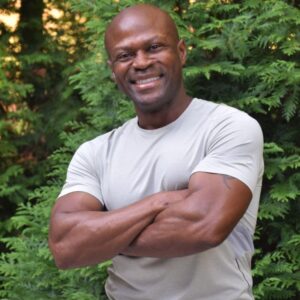 of the key barriers that have historically prevented Black people from participating in medical research?
of the key barriers that have historically prevented Black people from participating in medical research?
Tony: I think one of the key factors is definitely the Tuskegee [Syphilis Study on Black men]. I believe it shaped the history of mistrust in the medical system, as our grandparents taught us to be wary because no one wants to be treated as a guinea pig. There needs to be more research focused on the community and healthcare providers, not only to ensure safety but also to ensure that everyone is properly represented. This is crucial so that we, as Black people, can enter medical situations on equal footing, fighting the same battles our white counterparts face. Our experiences, outcomes, and treatments can differ, and it’s important for that to be acknowledged and addressed in the research and care we receive.
What would you say to someone in the Black community who is hesitant about enrolling in a clinical trial, and how can we build trust in medical research?
Tony: I would say, trust your doctor and build that trust with your physician. Once you have that trust, you can take control of your own path, but also let your doctors guide you along the way. Allow them to share information about research and studies so you can make an informed decision for yourself and your family. It’s about making your own decisions regarding your health.
We have to stand in solidarity for our health because when we do, we can achieve better treatment and outcomes. For example, if I see a Black 50-year-old patient, like myself, who’s been on a certain medication and had a great outcome, I’d be more likely to participate in that trial because they look like me, are around my age, and had success with it. It’s different from seeing a white male who doesn’t share my experience or background. Representation matters, and it can help us feel more confident in our healthcare choices.
How did your role as a patient advocate for the PAN Foundation influence your perspective on the importance of diverse clinical trial participation?
Tony: The PAN Foundation has been exceptional! I first started advocating with them in 2023, and when I met them for the first time, I had never encountered an organization that opened its arms so warmly and accepted me as if I were family. I just never felt that energy, in my heart and right away, I knew this was family. They genuinely want to protect me, create a better path for me, and make this journey I’m on more manageable and meaningful.
Through that connection and feeling of support, I now advocate in ways I never could have imagined. I use my voice to reach out to our representatives in D.C., so patients like myself, or those with rare diseases, can live better lives. It’s about ensuring we don’t fall into medical debt and that we receive all the necessary treatments to live the highest quality of life possible.
From your experience, what improvements can be made to make clinical trials more accessible and inclusive for people of color, particularly those with chronic conditions like multiple myeloma?
Tony: I think that clinical research is absolutely fundamental to advancing care for patients today. The lack of representation in clinical trials may lead to a lack of access to effective medical interventions for patients of color, as well as for the LGBTQ+ community. Approval and indications for new therapies are often based on the demographics of the population included in clinical studies. We need to open this up to all demographics, all people, and all walks of life, because that’s what the medical industry should reflect.
My disease, multiple myeloma, does not discriminate based on race, color, or gender—and most diseases don’t, either. So, clinical trials should not be discriminatory. Everyone should have an equal opportunity to participate in research and benefit from the advancements that come from it. Representation in clinical trials is crucial for ensuring that treatments work for all populations.

